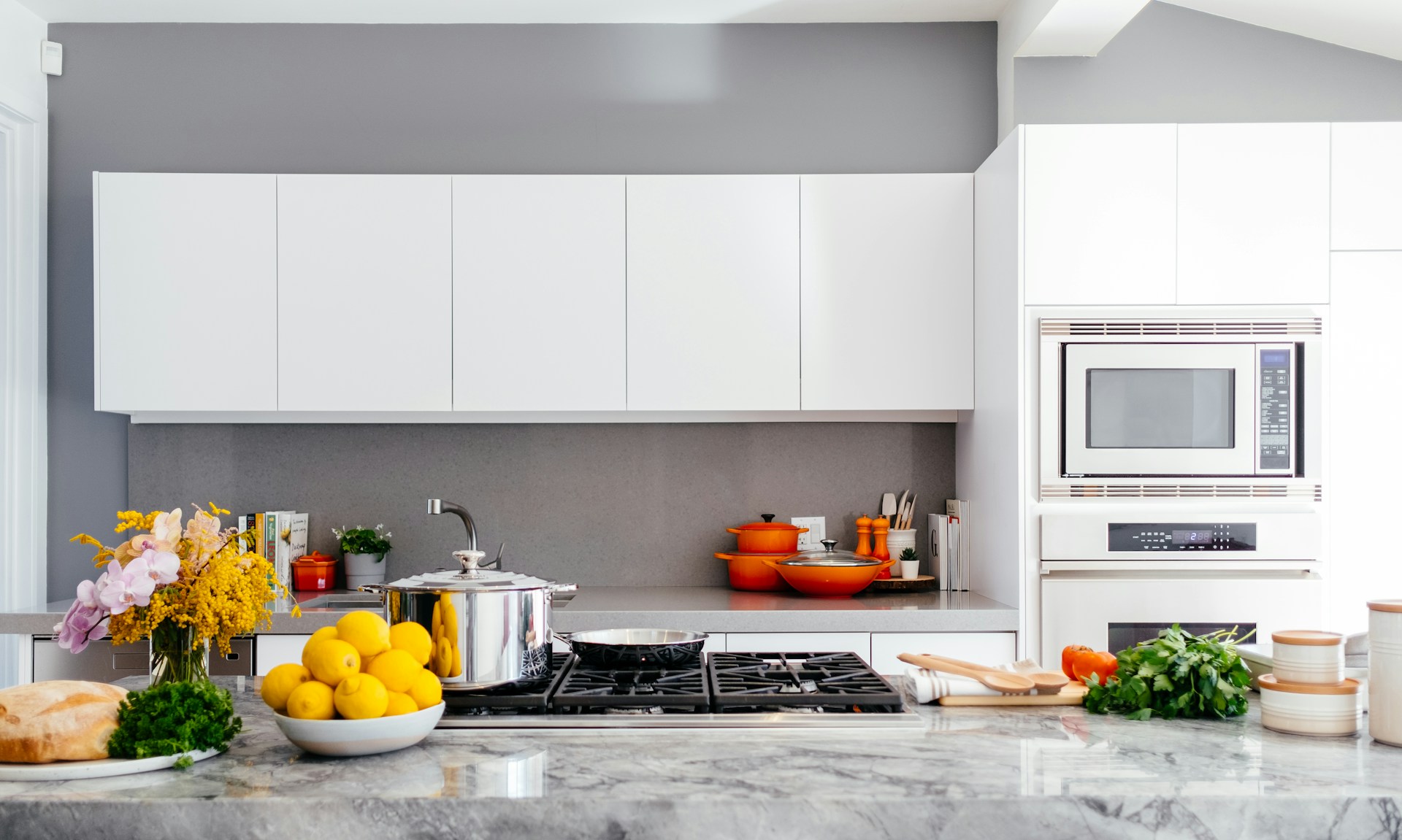Top Tips for UK Homeowners to Boost Kitchen Air Quality Effectively
Maintaining good air quality in your kitchen is crucial for both your health and the overall comfort of your home. Here are some top tips to help you improve the air quality in your kitchen, ensuring a healthier and more pleasant cooking environment.
Understanding the Sources of Indoor Air Pollution in the Kitchen
Before we dive into the solutions, it's essential to understand the common sources of indoor air pollution in the kitchen. These include:
This might interest you : Top UK Blenders for Crafting Delicious Nut Butters: A Comprehensive Guide
- Cooking: Gas cookers and ovens release particulate matter (PM) and other pollutants, which can trigger asthma attacks and other respiratory issues.
- Smoke and Vapour: Burning wood or coal on stoves or open fires also releases PM, which is highly detrimental to health.
- Damp and Mould: Poor ventilation can lead to damp conditions, fostering mould growth, which exacerbates respiratory problems.
- Dust Mites: Dust mites thrive in humid environments and can aggravate allergies.
Improving Ventilation in the Kitchen
Ventilation is the cornerstone of maintaining good air quality in the kitchen. Here are some effective ways to improve ventilation:
Using Extractor Fans
- Install an extractor fan in your kitchen to remove cooking fumes and moisture. Ensure the fan is used every time you cook and leave it on for 10 minutes after cooking to clear the air thoroughly.
- Clean the extractor fan regularly to maintain its efficiency.
Opening Windows
- If you don't have an extractor fan, open windows every time you cook to allow fresh air to circulate and stale air to escape.
Advanced Ventilation Systems
- Consider installing a Positive Input Ventilation (PIV) system or a Decentralised Mechanical Extract Ventilation (DMEV) system. These systems introduce fresh, filtered air into your home and remove stale, humid air, significantly improving air quality.
Choosing the Right Appliances
The appliances you use in your kitchen can also impact air quality.
Also read : Top UK Blenders for Crafting Delicious Nut Butters: A Comprehensive Guide
Electric vs. Gas Cookers
- Electric cookers are generally cleaner than gas cookers, as they do not release particulate matter or other pollutants. If possible, consider switching to an electric cooker, especially if you have respiratory issues.
Energy-Efficient Appliances
- Opt for energy-efficient appliances that produce fewer emissions and require less energy to operate. These appliances not only help in reducing air pollution but also lower your energy bills.
Reducing Moisture and Damp
Moisture and damp conditions are breeding grounds for mould and dust mites, which can severely impact indoor air quality.
Lowering Humidity
- Keep your kitchen well-aired by opening windows regularly and using an extractor fan. Avoid drying washing inside the kitchen to prevent moisture buildup.
Cleaning Surfaces
- Clean surfaces with a damp cloth at least once a week to prevent dust from accumulating. This is particularly important in areas around cooking appliances.
Using Air Purifiers
Air purifiers can be a valuable addition to your kitchen, especially in urban areas where outdoor pollution levels are high.
How Air Purifiers Work
- Air purifiers like those from Eoleaf use advanced filtration technologies, including activated carbon filters, photocatalytic technology, and ionisation to remove a wide range of airborne contaminants such as dust, pollen, smoke, mould, and volatile organic compounds (VOCs).
Placement and Maintenance
- Place your air purifier in an optimal location where air flows freely and pollutants are likely to concentrate. Regularly maintain the filters to ensure the purifier works efficiently.
Designing a Ventilation-Friendly Kitchen
The design of your kitchen can also play a significant role in maintaining good air quality.
Kitchen Design Considerations
- When designing or renovating your kitchen, consider the placement of windows and doors to ensure good natural ventilation. Incorporate features like indoor living walls, which can act as natural air purifiers and enhance the aesthetic appeal of your kitchen.
Minimizing Clutter
- Keep your kitchen clutter-free to reduce the accumulation of dust and other allergens. Use hidden storage spaces to keep utensils and other items organized.
Practical Tips for Daily Use
Here are some practical tips to help you maintain good air quality in your kitchen on a daily basis:
- Regular Cleaning: Clean your kitchen surfaces regularly, especially after cooking, to prevent grease and dust buildup.
- Avoid Strong Chemicals: Use mild cleaning products to avoid releasing VOCs into the air.
- Monitor Humidity: Use a hygrometer to monitor the humidity levels in your kitchen and adjust your ventilation accordingly.
- Maintain Appliances: Regularly clean and maintain your kitchen appliances to ensure they operate efficiently and do not produce excessive emissions.
Table: Comparing Ventilation Systems
| Ventilation System | Description | Benefits | Cost |
|---|---|---|---|
| Extractor Fan | Removes cooking fumes and moisture | Easy to install, cost-effective | £50-£200 |
| Positive Input Ventilation (PIV) | Introduces fresh, filtered air into the home | Improves overall air quality, reduces damp and mould | £500-£1,500 |
| Decentralised Mechanical Extract Ventilation (DMEV) | Continuously removes humid air and introduces fresh air | Effective in reducing moisture levels, improves air quality | £800-£2,500 |
| Heat Recovery Ventilation System (MVHR) | Replaces stale air with fresh, filtered air while recovering heat | Energy-efficient, improves air quality and reduces moisture | £1,500-£4,000 |
Quotes from Experts
- "Indoor living walls not only add natural beauty to your home but can also enhance air quality by acting as a natural purifier," says Karl Openshaw, Head of Creative at Blocc House of Interiors.
- "Installing a proper ventilation system can make a noticeable difference in your home’s air quality and overall health," according to Brookvent.
- "Eoleaf air purifiers deliver supreme filtration by combining several different filtration methods, making them an essential tool for ensuring indoor air is as pure as possible," explains the experts at Eoleaf.
Improving air quality in your kitchen is a multifaceted task that involves understanding the sources of pollution, improving ventilation, choosing the right appliances, reducing moisture, and using air purifiers. By following these tips and incorporating them into your daily routine, you can create a healthier and more comfortable cooking environment. Remember, good air quality is not just about health; it's also about enhancing the overall value and comfort of your home.






